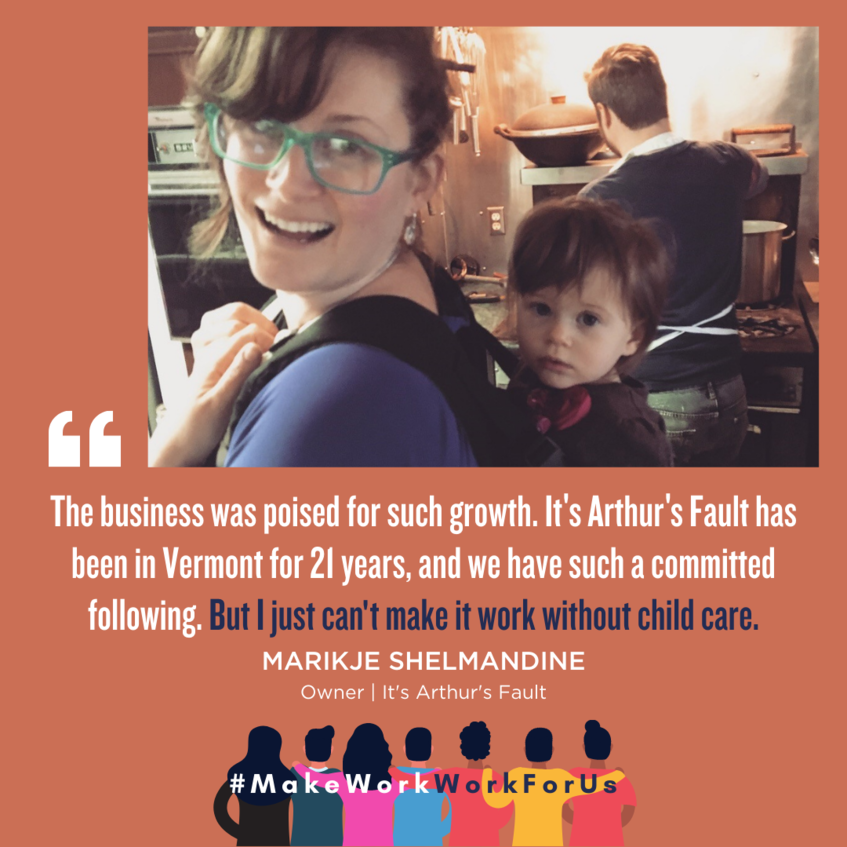Vermont's economy depends on women
This commentary is by Cary Brown, executive director of the Vermont Commission on Women; Meg Smith, director of the Vermont Women’s Fund; Rhoni Basden, executive director of Vermont Works for Women; Jessica Nordhaus, director of Change The Story VT; and Aly Richards, CEO of Let’s Grow Kids.
Marikje Shelmandine was running her small business, parenting a toddler, and pregnant when the pandemic first surged in the spring of 2020. Raising a family and running a business was a juggling act in the best of times, but after her second child was born, it became impossible for Marikje and she made the difficult decision to stop working.
 Marikje’s story is not unique. Since the pandemic began, 80% of those who have left the workforce across the nation are women—and women’s labor participation hit a 33-year low in January 2021.
Marikje’s story is not unique. Since the pandemic began, 80% of those who have left the workforce across the nation are women—and women’s labor participation hit a 33-year low in January 2021.
Workforce access has always been a problem for women; Covid made it worse. The pandemic did not create a gender gap in the economy; it exposed and exacerbated an unfair system.
Even before the pandemic, women were four times more likely than men to reduce their hours or leave the workforce to care for children or aging family members. This is because women often still earn less than men for the same work.
Marikje didn’t want to step away from the family business she inherited from her father, one that she had spent the previous two years growing. But without access to affordable, high-quality child care, she simply had no choice.
One of the greatest challenges affecting the future of Vermonters is our disappearing labor force. In April 2021, Vermont’s labor force shrank to its lowest size in nearly 30 years. Women in Vermont have faced unemployment at higher rates than men, according to U.S. Department of Labor data.
Vermont needs workers and entrepreneurs like Marikje to be able to fully participate in the economy.
There have been several local and national headlines recently about the shortage of one particular kind of worker: early childhood educators. Women make up 95 percent of that workforce, according to the National Women’s Law Center, and, in the United States, child care has long been undervalued as “women’s work,” historically provided by mostly women of color.
Despite their essential role in the development of children and — as Covid made clear — keeping our economy afloat, early childhood educators have been notoriously underpaid for decades.
Vermont child care workers earn, on average, $34,000 a year, usually without benefits. Think about that for a minute: Child care providers, the people — mostly women — who allowed ER doctors and other essential workers to keep working during the pandemic, generally don’t have access to health care benefits.
In addition to child care, women are disproportionately represented in many other low-wage industries requiring face-to-face contact that were hardest hit during the pandemic such as retailers, restaurants, and hotels. Vermont has the highest proportion of tipped wage workers in the nation, at 81%.
The bottom line is that women have been the backbone of the U.S. economy — the workforce behind the workforce — for decades. At the same time, women’s labor has too often remained invisible and unpaid or underpaid.
To be clear: This is not a women’s issue. When women work, Vermont’s economy thrives. It is an issue that spans across industry, region and demographics, affecting us all. Researchers estimate, for example, that if women earned wages equal to that of men who are comparable (in terms of age, education and number of work hours), women’s higher earnings would add an additional $1.2 billion to Vermont’s economy.
We have an opportunity and an imperative in Vermont to create an economy that works for everyone, including women. That’s why our organizations — the Vermont Commission on Women, Vermont Works for Women, the Vermont Women’s Fund, Change The Story VT, and Let’s Grow Kids — have come together to focus on solutions to support women in fully participating in the workforce with a campaign we’re calling #MakeWorkWorkForUs.
From advocating for policies like paid family leave and high-quality, affordable child care to closing the gender wage gap, to elevating women-owned businesses and supporting more women to pursue leadership roles, we all need to work together to make work work for women and for all of us. We all have a role to play: policymakers, employers, employees, advocacy organizations, and community members — together, we can #MakeWorkWorkForUs.
Visit our webpage at women.vermont.gov/makeworkworkforus to learn more, read Vermonters’ stories, download tools and resources and to be part of the solution.
by Brown, Smith, Richards, et al